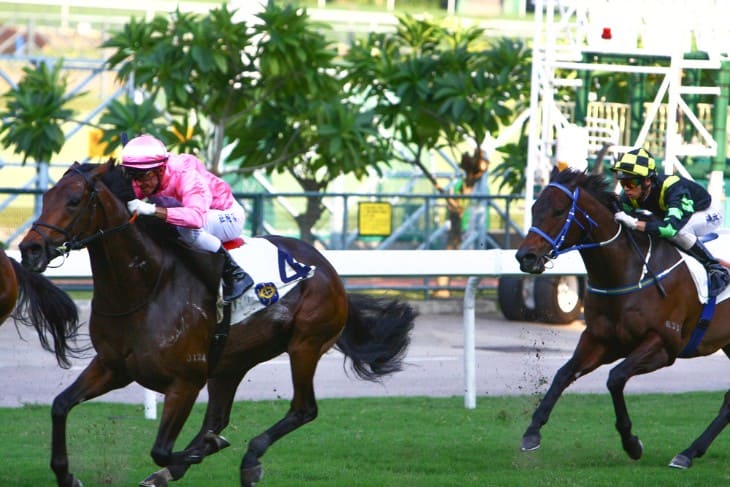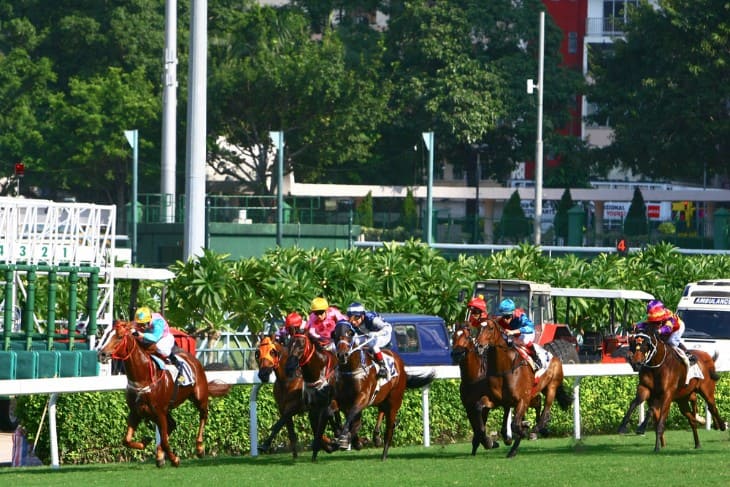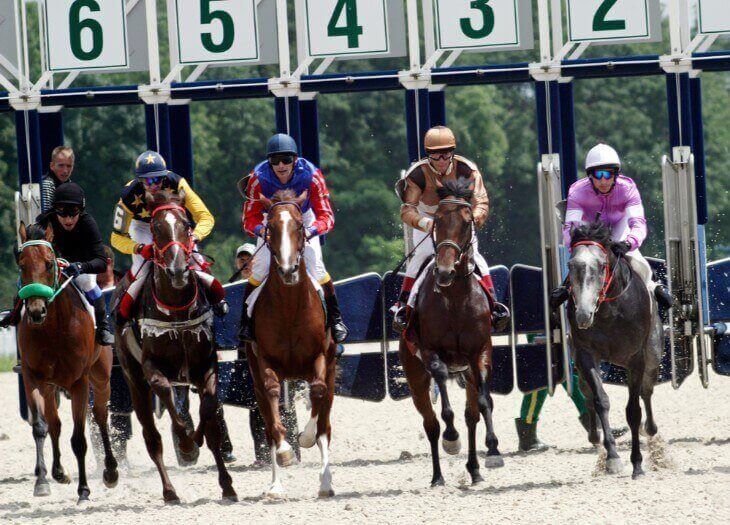- Understanding Starting Gate Positions
- The Significance of Track Layout
- Factors Influencing Gate Position Allocation
- Analyzing Historical Race Data
- Advantages and Disadvantages of Inner Positions
- Advantages and Disadvantages of Outer Positions
- Jockeys' Strategies for Different Positions
- Weather and Track Conditions Impact
- Technological Innovations and Starting Gate Positions
- Conclusion
When the crowd roars and the anticipation builds, it's not just the jockeys and the horses that feel the tension. The positioning of horses in the starting gates can often be the key to victory or defeat in a horse race. Beyond the glamour of race day, a complex interplay of factors comes into play, influencing how horses are allocated their starting gate positions. In this article, we'll delve into the fascinating world of starting gate positions and their impact on the outcome of horse races.
Understanding Starting Gate Positions
To truly comprehend the effect of starting gate positions, we first need to understand what they are. The starting gate, an integral part of horse racing, is the structure that holds the horses in place before the race begins. The allocation of positions within the gate isn't arbitrary; rather, it's a strategic process that takes into account various factors.
One crucial aspect is the track layout. Horse racing tracks come in different shapes and sizes, and each configuration can impact how horses run their race. Tracks might be oval, circular, or even include sharp turns. The position of the starting gate can significantly affect a horse's initial positioning on the track, which can, in turn, shape the entire race.
Moreover, the allocation of starting positions isn't solely determined by chance. Race organizers consider several factors when deciding who starts where. The form of the horse, the jockey's strategy, historical data, and even the weather conditions are all part of the equation. A skilled jockey might prefer an inner position to save ground and position the horse closer to the rail, while an outer position could provide a clearer path to the front for speedier horses.
The Significance of Track Layout
Picture this: a horse race where the track is a wide oval, with long straight stretches and tight, hairpin-like turns. Now, imagine the starting gate placed right before one of those sharp turns. The significance of track layout becomes immediately apparent.
The shape and layout of a horse racing track have a profound impact on how races unfold. Tracks with tight turns often present a challenge for horses starting from the outer positions. Negotiating those bends becomes trickier, and horses on the outside might need to expend more energy to maintain their position or find a good racing line. On the other hand, tracks with long straight stretches provide ample opportunity for horses to make their move, but a poor starting gate position might leave them stuck in the pack.
Think of it like a game of chess. Just as the opening moves set the tone for the entire game, the starting gate positions establish the initial conditions of the race. Horses closer to the inner positions can hug the rail and conserve energy, whereas those on the outer positions might need to navigate the pack and find the right moment to make their move.
Factors Influencing Gate Position Allocation
You might wonder how horses end up in the starting gate positions they do. It's not a roll of the dice or a lucky draw. Race organizers take a range of factors into account to ensure a fair and competitive race.

First and foremost, a horse's form and recent performance play a pivotal role. Horses that have been consistently fast and successful might be assigned more favorable starting positions, giving them an edge in the early stages of the race. On the flip side, horses with less impressive track records might find themselves positioned on the outside, forcing them to work harder to secure a good position.
Jockeys' strategies also factor into the equation. Experienced jockeys are skilled at reading the track and anticipating how races will unfold. Some jockeys might prefer to be closer to the inside to take advantage of the shortest route, while others might opt for the outside to avoid potential traffic congestion.
Data science, too, plays a part. Previous races on the same track can reveal trends in terms of which starting gate positions tend to be more advantageous. Weather conditions are also considered – a wet or muddy track might affect how the race plays out, influencing gate allocation.
Analyzing Historical Race Data
Now, let's talk numbers – the kind that reveal patterns and insights. Historical race data is a goldmine for enthusiasts and analysts seeking to understand the relationship between starting gate positions and race outcomes.
Imagine a database filled with records of past races, detailing which horses started from which positions and how they fared. By crunching these numbers, researchers can discern trends and tendencies. They might find that horses starting from certain positions consistently have a higher chance of winning or placing in the top positions.
But it's not just about wins and losses. Data analysis can reveal subtler nuances. For instance, it might show that inner positions tend to yield higher percentages of horses leading the race early on. Or it might uncover a bias in how certain positions perform under specific weather conditions.
This wealth of information helps race organizers and jockeys make more informed decisions. It guides the allocation of starting gate positions, aiming to create a level playing field and deliver an exciting spectacle for racegoers.
Advantages and Disadvantages of Inner Positions
As the saying goes, "the shortest distance between two points is a straight line." That's precisely the advantage of starting from an inner position. Horses positioned closer to the rail often have a shorter path to follow, giving them a chance to save energy and potentially find an open lane to make their move.
However, it's not all sunshine and roses on the inside. Crowded conditions can lead to traffic jams, impeding a horse's progress. Moreover, a slow start or a hesitant horse from an inner position might result in getting boxed in by other horses, leaving little room to maneuver.
This delicate balance between the promise of a shorter route and the risk of congestion makes the inner positions a mix of opportunity and challenge. Skilled jockeys must assess the situation quickly and make split-second decisions to navigate their horses effectively.
Advantages and Disadvantages of Outer Positions
On the outer lanes of the starting gate, horses have a different set of considerations. The immediate advantage is a clearer path ahead. With fewer horses to contend with initially, jockeys starting from outer positions might find it easier to get their horse into a good rhythm and establish a strong position.
However, the drawback comes in the form of extra distance. Outer-positioned horses have to cover more ground in the early stages, potentially expending more energy than those on the inside. Additionally, the wider angles on turns might pose challenges in maintaining a smooth racing line.
Jockeys starting from outer positions often need to employ tactical strategies to avoid getting trapped wide and losing ground. Timing becomes crucial – making a well-timed move to tuck in behind other horses or finding the right moment to surge forward can make all the difference.
Jockeys' Strategies for Different Positions
When the gates swing open and the thunder of hooves fills the air, jockeys aren't just passive passengers. They're skilled tacticians, navigating their horses through the twists and turns of the racecourse. And the starting gate position is their first move on this strategic chessboard.
Jockeys starting from inner positions often have the advantage of a shorter path along the rail. This can mean conserving energy, finding a clearer path, and possibly getting a jump on the competition. These jockeys need to make swift decisions as the race unfolds, capitalizing on their advantageous position.
For those on the outer lanes, the approach is different. Jockeys might opt for a more conservative start, allowing their horses to find their stride before angling for a better position. It's a fine balance between conserving energy and making a timely move to secure a good position on the track.
In some cases, experienced jockeys might intentionally choose an outer position to avoid early traffic congestion on the inside. They might bide their time, waiting for the right moment to make their move and potentially swoop in from the outside to overtake competitors.
Each jockey's strategy is a dance of perception and execution. They must read the race as it unfolds, anticipate the moves of other riders, and adjust their tactics accordingly. It's a blend of skill, instinct, and thorough knowledge of both their horse and the competition.
Weather and Track Conditions Impact
Imagine a sunny day with a dry, fast track – the ideal conditions for a thrilling horse race. Now, picture the same race under pouring rain, with the track transformed into a muddy quagmire. The weather and track conditions can radically alter the dynamics of a race, and starting gate positions must be considered in light of these variables.
On a dry track, horses starting from inner positions might have a slight advantage due to the shorter path and potentially better footing near the rail. But when rain enters the equation, the inside can become muddier and more difficult to navigate, negating this advantage. In such cases, outer-positioned horses might find a better racing line on a drier part of the track.
Moreover, heavy rain can change the pace of the race. Horses that excel in muddy conditions might make their move earlier, attempting to build a lead before the final stretch. This could impact jockeys' strategies, especially those on the outer positions who might want to avoid getting caught in the spray and mud kicked up by horses ahead of them.
Weather and track conditions are variables that inject an element of unpredictability into horse racing. As we progress, we'll explore how starting gate positions can be adjusted to accommodate different conditions and what jockeys must consider when adapting their strategies in response to the ever-changing face of the track.
Technological Innovations and Starting Gate Positions

In the age of rapid technological advancement, even the world of horse racing hasn't been left untouched. Innovative technologies have been harnessed to enhance the fairness and precision of starting gate positions.
One such innovation is the use of electronic gate positioning systems. These systems replace the traditional manual allocation of positions with a computerized process. The goal is to eliminate any potential human bias and ensure a truly random allocation of starting positions.
These systems take into account various factors, such as a horse's recent performances, to determine an appropriate starting position. This digitized approach aims to level the playing field, preventing any accusations of favoritism or manipulation.
Furthermore, technology has allowed for real-time adjustments based on last-minute changes. If a horse is scratched, a late-comer is added, or conditions change dramatically, these systems can recalculate and allocate positions accordingly, ensuring a fair start for all participants.
For more information read our article: How Technology Changes Horse Racing Bets.
Conclusion
Starting gate positions are not arbitrary; they're the result of a careful deliberation involving a horse's form, jockey tactics, track layout, historical data, and even the weather. Inner positions offer a shorter path but risk congestion, while outer positions provide a clearer path but might require covering more ground.
Jockeys' strategies are pivotal, turning the starting positions into tactical opportunities. Whether hugging the rail or making a well-timed move from the outside, their decisions can define the race's trajectory.
Weather and track conditions throw a curveball, altering the dynamics and influencing the choices made by both jockeys and race organizers. Technological innovations have brought a new level of fairness and precision to the allocation of starting positions, ensuring that the sport continues to evolve with the times.
In the world of horse racing, the starting gate isn't just a structure – it's the beginning of a chess match where every move counts. So, the next time you find yourself at the edge of your seat as the gates spring open, remember the intricate dance of factors that have shaped the positions and strategies of the horses on that track. It's a captivating spectacle where science and art converge, creating a thrilling race that will forever be etched in the annals of horse racing history.








